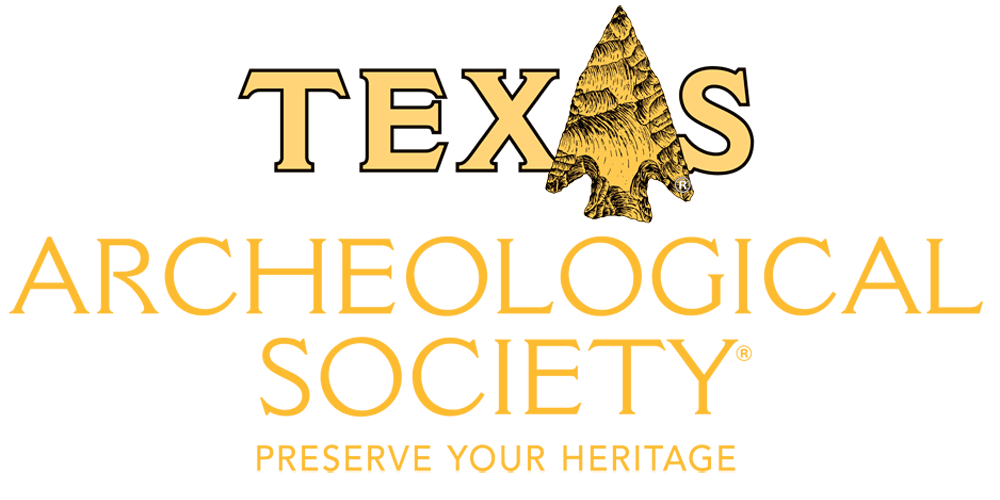2021 Annual Meeting Speakers |
Bricks, Bottles, and Bones at Frost Town: Historic Archeology of a 140-year-old Working-Class Houston Neighborhood
Friday, October 22nd, 6:30 pm link to talk here
Beginning in the 1830s, German immigrants settled in a prominent bend of Buffalo Bayou located just downstream from the famous Allen’s Landing. Named after its founders, Jonathan and Samuel Frost, the community called Frost Town covered eight city blocks. It began as a few scattered tents and evolved into a thriving neighborhood that survived for more than 130 years. It is one of Houston’s oldest neighborhoods, and it grew up shadow of Houston’s downtown business district. Throughout its lifespan, Frost Town was a working-class community. Like many similar urban neighborhoods across the United States, the ethnic makeup of Frost Town changed over time. The dominant groups that lived there were German immigrants/German Americans from the 1830s–1890s; African Americans from the 1890s–1920s; and Mexican immigrants/Mexican Americans from the 1920s–1970s. By the 1930s, the Hispanic residents called it Barrio del Alacran (the scorpion neighborhood) and by the early 1950s, the City considered it to be a slum area. The fate of the community was sealed when a large swath of the houses was removed in the mid-1950s for the construction of the Elysian Viaduct bridge. The last houses were torn down in 1990s for another freeway construction project. A Texas Department of Transportation (TxDOT) road improvement project triggered the first investigation of Frost Town in 2004. Archeologists were called in to examine the site because TxDOT would be removing the old Elysian bridge and replacing it with a larger and safer roadway. There were no surface indications that this had once been a residential community, but archeologists quickly discovered intact archeological remains of the former community in every trench they dug. This eventually led to series of more extensive archeological testing and archival research from 2008–2015, followed by large scale “data recovery” excavations in 2016 and 2018. For this project, Prewitt and Associates’ archeologists collaborated with TxDOT’s Archeological Studies Program and many volunteers from the Houston Archeological Society. This work discovered over 1400 residential and nonresidential features and recovered more than 250,000 artifacts associated with households from all time periods. This program will look at the history and historic archeology of Frost Town as it evolved over 140 years. The analysis of the archeological evidence is still underway, but the features and artifacts are already revealing some exciting insights into the people who lived in Frost Town at different times. In many cases, groups of artifacts can be linked with specific time periods and households. These materials can reflect differences in social and economic status between households and changing status over time. Some artifacts—such as German-made dolls and hand-painted Mexican pottery—also reflect the ethnicity of the residents. Some features do too. Lines of buried, upside-down bottles turned out to be garden and walkway borders that are strongly linked with German-immigrant households. Oral history interviews with former residents also provide rich narratives illuminating the final days of the Alacran community. The program will also look at the mystery of the Chinese opium pipe bowl and Chinese porcelain recovered from a yard pit at an early twentieth-century bordello. Douglas K. Boyd is a senior archeologist with Cox|McLain Environmental Consulting (Austin) with more years of experience than he would like to admit. He began his archeological career in the 1970s while in junior high and high school, working on several archeological projects for West Texas State University and the Llano Estacado Museum. He received a BA degree in General Studies-Archeology from West Texas State University in 1983 and an MA degree in Anthropology from Texas A&M University in 1986. Boyd spent 33 years at Prewitt and Associates, Inc. serving as a project archeologist, project manager, or principal investigator on numerous cultural resources management (CRM) projects throughout the state. Boyd has worked on many prehistoric and historic archeological site investigations, primarily in Texas, New Mexico, and Oklahoma. He has published more than 150 CRM reports and articles for books, professional journals, and popular magazines. He has presented hundreds of archeology programs and site tours and collaborated on a wide variety of public outreach products, from popular brochures to internet web sites to documentary films. Boyd also serves on the Texas Preservation Trust Fund Advisory Board and the Antiquities Advisory Board to the Texas Historical Commission. One of his more rewarding outside activities is his role as a Youth Group dig for the Texas Archeological Society’s annual field school. The 2020 field school in Kerrville with be Boyd’s 20th year as one of the Youth Group Directors. | Origins and Tenacity of Myth in Archaic Period Rock Art of the Lower Pecos Canyonlands |

 Douglas K. Boyd, Cox|McLain Environmental Consulting
Douglas K. Boyd, Cox|McLain Environmental Consulting